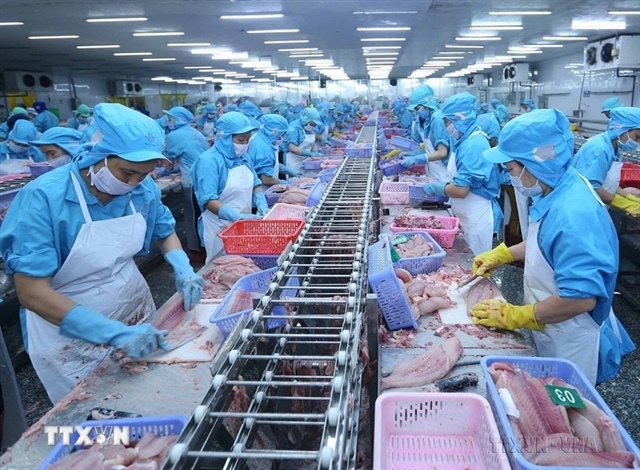CPTPP opens up prospects for Viet Nam’s exports to the Americas
CPTPP opens up prospects for Viet Nam’s exports to the Americas
Two years after it came into effect, the Comprehensive and Progressive Agreement for Trans-Pacific Partnership (CPTPP) has helped Viet Nam boost its exports and open the door to trade in the Americas, Deputy Minister of Industry and Trade Do Thang Hai told a seminar in Ha Noi on Tuesday. 
With the theme 'CPTPP - Opportunities for Viet Nam’s Exports to American Markets', the deputy minister told the gathering that economic and trade ties between Viet Nam and the Americas have grown robustly in recent years.
Ratified on December 30, 2018, the CPTPP took effect in Viet Nam on January 14, 2019. In 2020, when COVID-19 first struck, trade between Viet Nam and the Americas stood at US$111.5 billion, up 16 per cent against 2019. Of this, Viet Nam’s exports were worth $89.7 billion, accounting for 31.7 per cent of its total and representing an annual growth rate of 21.7 per cent.
In the first quarter of this year, Viet Nam posted improved exports to many CPTPP member countries in the region. Notably, its value of shipments to Canada, Chile, Mexico, and Peru stood at $1.13 billion , $321 million, $931 million, and $134 million, respectively, for increases of 15 per cent, 12 per cent, 17 per cent, and 35 per cent.
Hai suggested Vietnamese firms study the possibility of exploiting existing incentives, economic links, and infrastructure in member countries to seek business opportunities and diversify export markets and products.
Vietnamese Trade Counsellor in Canada Do Thi Thu Huong recommended that Vietnamese companies be active in studying the agreement, particularly regarding preferential tariffs and rules of origin, and to take advantage of e-commerce platforms to connect with their Canadian counterparts.
Participants also pointed to challenges facing ties between Viet Nam’s business community and other CPTPP members, including those from the Americas. They include geographical distance, different languages, and a lack of up-to-date market information.
Some Vietnamese enterprises also find it difficult to meet quality standards and rules of origin in target markets.



























